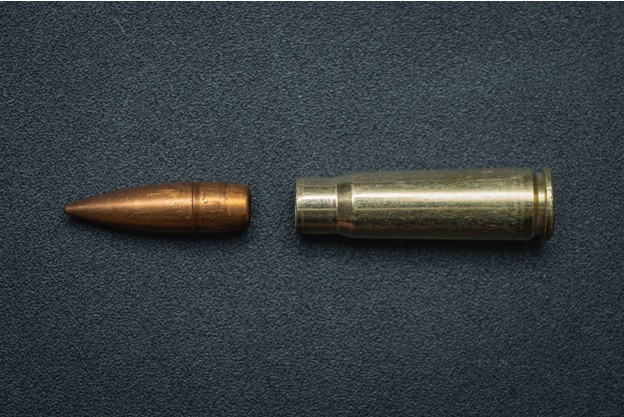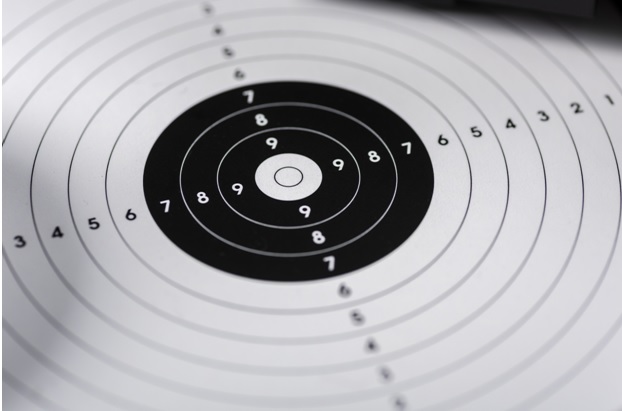Among the popular cartridges that we sell here at Bucking Horse Outpost are 7.62x39mm. Not to be confused with 7.62x51mm NATO (which itself is very similar to .308 Winchester), this cartridge, like many others, is often loaded with full metal jacket and hollow point bullets.
But these should not be used for the same shooting applications. Here are some things you should know about 7.62 full metal jacket ammo.
About 7.62x39mm Ammo
Also known as the 7.62 Soviet (and sometimes as the .30 Russian Short), the 7.62x39mm cartridge is a rimless bottlenecked cartridge that was originally developed in the Soviet Union between 1943 and 1944 before being put into official service in 1945.
In July of 1943, the Russian Commissariat for Armaments met to discuss the development of an intermediate rifle cartridge, one that offered substantially more power than a pistol cartridge but which was lighter (and produced less recoil than) a full-sized rifle cartridge.
For some context, many Soviet soldiers carried Mosin-Nagant rifles chambered in 7.62x54mmR, a much larger cartridge that was well-respected for its stopping power but which produced punishing recoil. The Soviets wanted something lighter yet still powerful enough to replace this aging rimmed cartridge that had been in service since 1891.
One of the first variants produced was the M43 7.62x39mm round, which was produced with a 123-grain, steel-cored, boat-tailed bullet with a copper jacket. It features a highly tapered design that was easy to chamber and extract since there was minimal contact with the chamber before the round became fully chambered.
These bullets were extremely stable, even on contact with soft targets, which, while it diminished the wounding efficacy of the bullet, improved its stability and accuracy, both at long and short ranges, constituting one of the greatest advantages of the cartridge.
In fact, the Soviets originally rejected the idea of using boat-tailed bullets, but after determining that the boat-tailed design substantially improved accuracy both at short and long ranges (after the bullet fell to subsonic velocities) they proceeded with the use of boat-tailed bullets.
The cartridge, once adopted and listed into service, saw widespread service throughout the Soviet Union and in countries under the Soviet sphere of influence. It remains a popular cartridge around the world.
Moreover, two of the most infamous rifles of all time were built around the cartridge - the SKS and the AK-47 which have both seen widespread service around the globe, as well as many other platforms.
Today, the widespread availability of the cartridge, comparatively low recoil, fair accuracy, and generally low costs keep it fairly popular for sporting and competitive applications.

7.62 Full Metal Jacket Bullets: Production
The production of 7.62 full-metal jacket bullets is similar to other FMJ bullets.
If the bullet has a lead core, this is produced by drawing lead wire into the roughly appropriate diameter of the bullet and then swaging (forcing) it into shape.
Some 7.62x39mm ammo may still feature a steel core. Be aware, however, that lead core ammo is denser than steel and therefore will carry ballistic energy farther and more efficiently than steel-core ammo.
The jacket of the bullet starts out as a copper sheet, which is then formed into a cup shape. The core of the bullet is placed in the copper jacket “cup” and then the jacket and core are run through one (or several) swaging dies.
The process of swaging forces the bullet and jacket into the precise, appropriate dimensions for the caliber of the cartridge and gives the bullet its final dimensions.
For instance, some 7.62 full-metal jacket bullets are boat-tailed; nearly all of them are pointed spitzer bullets that are more aerodynamically efficient and stable in flight over greater distances.
FMJ vs. Hollow Point Ammo
The production of 7.62 full metal jacket ammo confers numerous benefits to the round. Full-metal jackets were first popularized in the late 1800s, particularly after the Hague Convention of 1899 established standards forbidding the use of rounds that expanded on impact, causing more devastating wound channels.
Full-metal jacket ammo offers a number of advantages over other types of ammo. One, it is fairly economical and cost-effective to produce in large quantities, making most FMJ ammo fairly affordable.
Secondly, FMJ ammo is very stable, not only in flight but on impact. The design of FMJ bullets make them aerodynamically stable so they don’t lose much speed or accuracy.
Third, FMJ bullets are also designed not to deform on impact with a soft target, giving them superior penetration characteristics.
This makes FMJ ammo ideal for high-volume target shooting and competition. It also makes certain types of 7.62 full-metal jacket ammo, particularly boat-tailed ammo, ideal for long-distance shooting.
It does however create some disadvantages. Since FMJ bullets are designed to penetrate, they are not suitable for defensive applications or certain sporting applications like hunting.
FMJ ammo is not optimized for energy transfer characteristics, giving it less stopping power than other sorts of ammo like hollow-point ammo, which is designed to mushroom on impact, creating a wider wound channel, more cavitation, and dumping all of its energy efficiently.
FMJ ammo is also likely to overpenetrate, creating a risk of traveling through a soft target and into what is behind it, whereas hollow-point ammo is designed to hit a soft target and stop within it, rather than over penetrating and traveling (undesirably) beyond the target.
So, if your aim is high-volume target shooting, training, or competition, 7.62 full-metal jacket ammo is ideal.
7.62x39mm can also be an effective caliber for defensive applications and hunting, but if you use it for those purposes, you should use a 7.62 hollow-point round.

A Note About Certain 7.62x39mm Ammo
Besides making sure you pick an appropriate bullet for your shooting discipline, you should also be careful about buying some imported and surplus ammo. Some older 7.62 rounds might be loaded with corrosive primers. Many modern ones are not, but if you are not sure, be judicious about cleaning your firearm because even a few rounds of ammo loaded with corrosive primer can damage the bore if you are not careful about cleaning.

